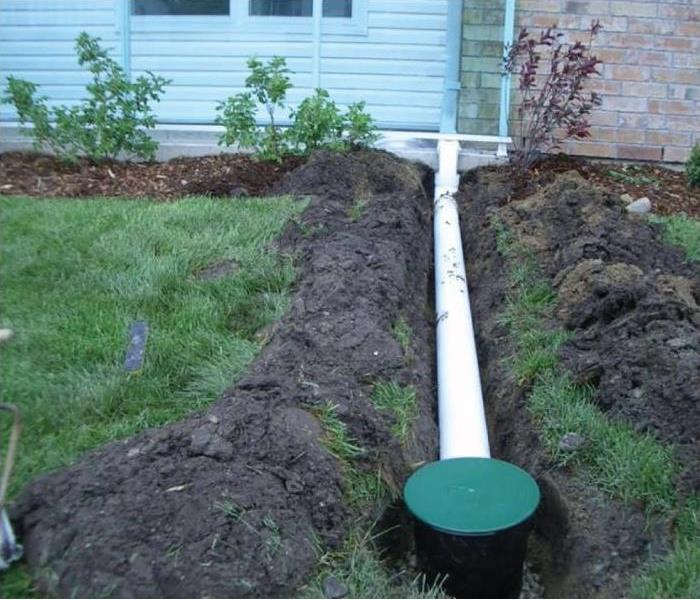Common Drainage Problems in Your Yard
9/30/2019 (Permalink)
The 4 most common yard drainage problems
When you think of drainage problems, most homeowners immediately think of drains inside the house. However, just like inside drains, yard drain issues can affect your quality of life just as well. Many of these issues are easily avoidable just by doing a routine visual inspection, or periodic maintenance.
1. Clogged Yard Drains and Area Drains
Many things can clog yard drains. Because many yard drains are located near a grass area, the usual suspects are leaves, twigs, grass cuttings, and trash. It’s always a good idea to periodically check your yard and area drains. You can see a small portion of yard drain from above the grating. It should be easy to see if an accumulation of debris or sediment is obstructing the water flow. This cure can be as simple as opening the grate when necessary and removing these items lying in the base of the drain. This is an easy fix; you can use a garden scoop, or simply put on a rubber glove and use your hand.
<pattachment-486">A clogged area drain can allow water to enter a basement
It is not advisable to flush them with a garden hose, as these items then tend to clog the pipe itself. If there is a long-standing problem that has made its way into the pipe, a sewer cleaning or water jet may be needed. In some cases pushing a pressurized garden hose in and out of the pipe can flush out the debris.
2. Dirt and Debris in Yard Drain
During the Fall season, a heavy load of dirt and debris can easily enter the yard drain. As the leaves begin to dry and fall from the trees, many of them get stuck under the grate. Carrying out yard maintenance and regular cleaning or mowing can help prevent clogging. Before heavy Spring rains occur, always make sure your yard drain gratings are cleaned of any sediment or leaves. This simple step can save you from a flooded area, or property damage. This is particularly true of area drains that are located just outside of an entry door.
While leaves are common culprits, tree roots present the more serious threat. Tree roots often look for the nearest source of water. Since area and yard drain lines are shallow, it is not unusual for roots to penetrate yard drainage lines. Yard drains provide the moisture that the roots need, and roots are strong enough to penetrate through old pipes, causing breaks and blockages.
3. Low Lying Areas with Poor Drainage
Sloping is another factor. The flooded areas in your lawn, or finished areas, are possibly caused by improper sloping or grading of your yard itself. If this is the case, check how the grading is structured in your property. This can be done using a line level, which is simply a line of rope with a level hanging off of it. A more sophisticated device is a lazer level.
<pattachment-485">Pooling water can create health issues
Affected areas usually have a poor drainage design, or no drainage system at all. Even when your own yard water usage does not cause the flood, your neighbor’s sprinkler systems can be the problem due to grading issues. But most frequently it is due to rainwater. In some rare cases dislodged sanitary home drain lines can seep waste water to outside the house itself. Needless to say, this poses the most severe health danger.
4. Stagnant Water
Pools of standing water in your yard is clear sign of drainage problem. If this is the case, there can be multiple underlying issues. As an example, existing hardpan (soil with a high clay content has very poor drainage qualities) in your property and poor grading. A hardpan calls for site-wide inspection and possibly a new drainage plan. The solution may involve excavation in wide areas of the lawn. In areas with high rainfall, pools of standing water make your yard not only aesthetically unpleasing but also a breeding ground for insects, hence health problems. Stagnant water creates the perfect environment for the following insects to breed and thrive: Mosquito, Fly maggots, Dragonfly nymphs, and Water scorpions. Some insects are more than just nuisance. They are known to be carriers of dangerous diseases.





 24/7 Emergency Service
24/7 Emergency Service
